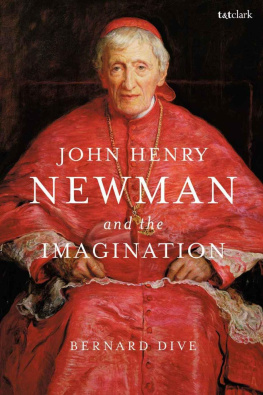HENRY WALTERS AND BERNARD BERENSON

HENRY WALTERS and BERNARD BERENSON
Collector and Connoisseur
STANLEY MAZAROFF
Foreword by William R. Johnston

2010 The Johns Hopkins University Press
All rights reserved. Published 2010
Printed in the United States of America on acid-free paper
2 4 6 8 9 7 5 3
The Johns Hopkins University Press
2715 North Charles Street
Baltimore, Maryland 21218-4363
www.press.jhu.edu
Library of Congress Cataloging-in-Publication Data
Mazaroff, Stanley.
Henry Walters and Bernard Berenson : collector and connoisseur / Stanley Mazaroff.
p. cm.
ISBN-13: 978-0-8018-9512-8 (hardcover : alk. paper)
ISBN-10: 0-8018-9512-X (hardcover : alk. paper)
1. Walters, Henry, 18481931. 2. Berenson, Bernard, 18651959. 3. ArtCollectors and collectingUnited StatesBiography. 4. Walters Art Gallery (Baltimore, Md.) I. Title.
N5220.W43M39 2010
709.2273dc22
[B] 2009037378
A catalog record for this book is available from the British Library.
Frontispiece: Henry Walters around 1908 at the age of sixty (Walters Art Museum, Baltimore, Maryland); Bernard Berenson around 1909 at the age of forty-four (Villa I Tatti, Firenze)
Special discounts are available for bulk purchases of this book. For more information, please contact Special Sales at 410-516-6936 or .
The Johns Hopkins University Press uses environmentally friendly book materials, including recycled text paper that is composed of at least 30 percent post-consumer waste, whenever possible. All of our book papers are acid-free, and our jackets and covers are printed on paper with recycled content.
To Nancy
ILLUSTRATIONS
PLATES
Color plates appear after .
. Raphael and his workshop, Madonna of the Candelabra
. The Ideal City
. Maerten van Heemskerck, Panorama with Abduction of Helen
. Bernardo Daddi and his workshop, Madonna and Child
. Bronzino, Portrait of a Baby Boy
. Bicci de Lorenzo, The Annunciation
. Bartolomeo Di Giovanni, The Myth of Io
. Pintoricchio, Saint Jerome in the Wilderness
. Saint George and the Dragon, once attributed to Carpaccio
. Filippo Lippi, Virgin and Child
. Carlo Crivelli, Virgin and Child with Saints and Donors
. Giovanni Bellini and his workshop, Madonna and Child with Saints Peter and Mark
. Giulio Romano, Madonna and Child with Saint John the Baptist
. Bartolo Di Fredi, Massacre of the Innocents
FIGURES
. Cartouche with bronze bust of William T. Walters
. Self-portrait at the Age of 25, attributed in the past to Raphael
. Self-portrait, attributed in the past to Michelangelo
. Salle in Massarenti Gallery, Rome, around 1900, displaying self-portraits attributed to Raphael and Michelangelo
. Copy of Domenichinos Flagellation of Saint Andrew
. Copy of Guido Renis Saint Andrew Led to His Martyrdom
The Descent from the Cross, attributed in the past to Caravaggio
. Copy of Titians Christ and the Tribute Money
. Salle in Massarenti Gallery, Rome, around 1900, displaying copy of Christ and the Tribute Money
. Salle in Massarenti Gallery, Rome, around 1900 with Pontormos Portrait of Maria Salviati de Medici practically hidden in corner of room
. Pontormos Portrait of Maria Salviati de Medici (before restoration)
. Pontormos Portrait of Maria Salviati de Medici with Giulia de Medici (after restoration)
. Walters Art Gallery, 1909, displaying masterpieces of the Italian painting collection, including self-portraits attributed to Raphael and Michelangelo
. Jesus Crowned with Thorns, attributed to Caravaggio
. Niccol Rondinelli, Madonna and Child with Saints Michael and Peter
. Cosimo Rosselli, Madonna and Child
FOREWORD
What transpires when a self-described capitalist engages a world-renowned connoisseur of Renaissance Italian art to refine and enhance his vast collection? Stanley Mazaroff explores in depth the complex relationship and the exchanges between Baltimore collector Henry Walters and scholar Bernard Berenson. The years covered in his study, principally 1910 through 1916, proved critical for both of them: Berenson was beginning to venture into the art market, collaborating with Joseph Duveen in a partnership that would sometimes compromise his judgment, and Walters, having just completed a Genoese palazzo-style museum building, was hastening to fill it with additional purchases.
The Johns Hopkins University Press has devoted two publications to the Walters collection. This writers William and Henry Walters, the Reticent Collectors (1999) is primarily biographical and deals with two generations of the Walters family, their lifestyles, and their varied activities in finance and philanthropy, as well as their art collecting. The current volume, in contrast, examines Henry Walterss most pivotal, yet most controversial acquisition, the Marcello Massarenti collection. With this single purchase of more than sixteen hundred works of art in 1902, Henry Walters created the core collection for a museum that he would eventually bequeath to his native city in memory of his father.
In particular, Mazaroff focuses on the 520 Italian paintings in the collection, ranging from the Gothic through the Baroque periods. Although aware of the rumors then circulating regarding the authenticity of many of these works, Walters could not have anticipated that so many of their original attributions would prove untenable. Realizing that neither he nor his immediate advisers could resolve such issues themselves, he retained Berenson for advice on the elimination of works, additional purchases, and the cataloguing of the collection.
Berenson faced numerous challenges in his dealings with his client. Though seemingly profligate when purchasing objets dart in an astonishingly wide range of fields, Henry Walters was far less cavalier when it came to paying large sums for individual paintings. Winnowing the collection was equally problematic, given Walterss extreme reluctance to part with anything; the offending works were usually merely consigned to storage. Most significantly, Berenson was already overextended; he had previous commitments to other clients and, once partnered with Duveen in 1912, he no longer regarded Henry Walters and his collection as a top priority.
Mazaroff examines Berensons proposals for the many works to be discarded, and he also discusses Berensons thirty-six additions, observing that, although none of the latter were truly stellar, they contributed to the breadth of the collection. By eliminating the pretentious attributions inherited from Massarenti, Berensons major contribution was not through additions but through a refined process of subtraction. In the course of his research, Mazaroff discovered considerable new information both in Baltimore and at I Tatti, Berensons villa at Settignano. As a result of Mazaroffs perseverance and through the diligence of the archivists in Florence, much of Berensons research on the Walters collection, previously unlocated, was rediscovered. Mazaroffs realization that Walterss 1915 handbook incorporated many of Berensons reattributions proves particularly significant for the study of the Italian holdings, especially in view of the fact that the proposed scholarly catalogue was abandoned after Walters severed his ties with the expert in 1917.
Next page












